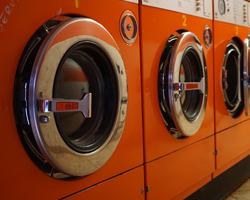
Some Thoughts About Data Cleansing
Let’s take a step back to a fundamental task in analytics and go through some thoughts about data cleansing. This is the process where you need to make sure any data you are going to use is the best quality possible. That means it must be accurate, consistent and available in a useable condition. We also talk about removing artefacts.
What are the benefits of data cleansing?
There are a wide number of benefits so we’ll put the most straightforward below:
- Putting data through a cleansing process removes inaccuracies, errors and flaws which would otherwise create inconsistent information and therefore results
- It helps to identify issues with how data is being provided and stored
- It helps ensure you have standardised data from multiple sources which will integrate
- Clean data is faster and easier to retrieve and analyse
- It provides a basis for accurate insight for decision making – helping staff and customers alike
Why should this be important to you? Well, poor quality data can make any meaningful insight in your data almost impossible to find. Using such data will have a negative effect on the rest of the business information, skewing results and potentially pointing to incorrect decisions. So, by hunting down those bad bits of your data and correcting them, you can be more confident of the insights you receive.
The downside with data cleansing is it can take time. Although there are some excellent tools out there to help you automate the process, you will still need to take some time to manually check the data for any errors or new issues. So you need to spend the time wisely and make sure the results are to the best standard you can achieve.
First things first
When you start looking at data cleansing the first task is to take a step back and think about your end objectives. What you are looking to achieve and how colleagues will use any data for insight will guide your approach. So get feedback from the stakeholders involved, asking what information they would want to see included in any Data Analytics project. This will point you to the initial sources and allow you to focus on what data should be prioritised.
Here are some tips to help you build your processes for quality, clean data.
Keep a watch for errors
Errors are not necessarily random. They can occur in patterns, so it is useful to look for any trends that underly any data errors. Doing this will help to identify and resolve any errors in advance. This can be vital where data from multiple sources is being imported and could point to other issues, either upstream within the data silo or downstream within your DA app.
Make Sure All Processes Are The Same
This often gets overlooked but it is vital that the point of entry for data is the same for all sources. Otherwise, you can experience duplicated or missing data. If you adopt a standard process to all data you can be confident of avoiding such issues later.
Check and Validate For Accuracy and Consistency
As you clean data it should be checked for accuracy before usage. This is where AI and machine learning can really come into its own by automating the process and ensuring you have data that is consistent.
Torpedo Any Duplicates
It’s very easy to leave duplicate data in place. It needs to be found and removed. Again, software tools can help enormously in identifying and removing duplicates, right down to the likes of Excel’s duplicates feature. However, it is also useful to check duplicate data for any other information they carry which would be of use.
Take Time To Review
Getting your data to a useable standard has already involved several steps. So this is a good point to look at appending it. This is where you combine data to plug gaps and thereby improve the quality of the information you have. This is best undertaken using a software tool which will merge data together and automatically spot any issues.
Motivate Your Colleagues To Improve Data Quality
Rounding off some thoughts about data cleansing, far too often data quality is dependent on the source – your colleagues. Staff who provide accurate quality data will save time and budget downstream. Communicating to your colleagues how the importance of their contribution to improving data quality will reduce the time spent in this area in the future. From experience this does require some tact; criticism can sting, after all. But by showing data quality and their contribution in a positive light you are effectively getting free resource to boost your chances of using clean, quality data.
